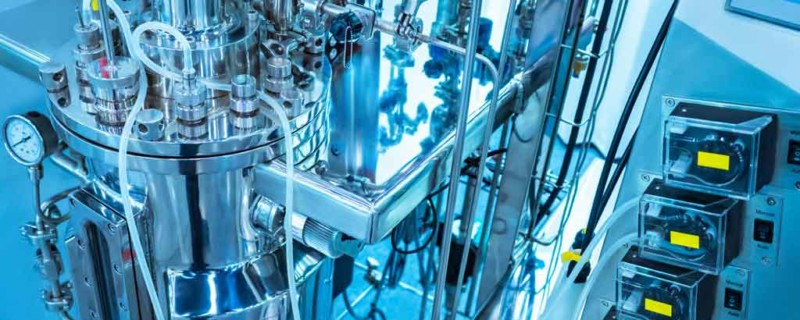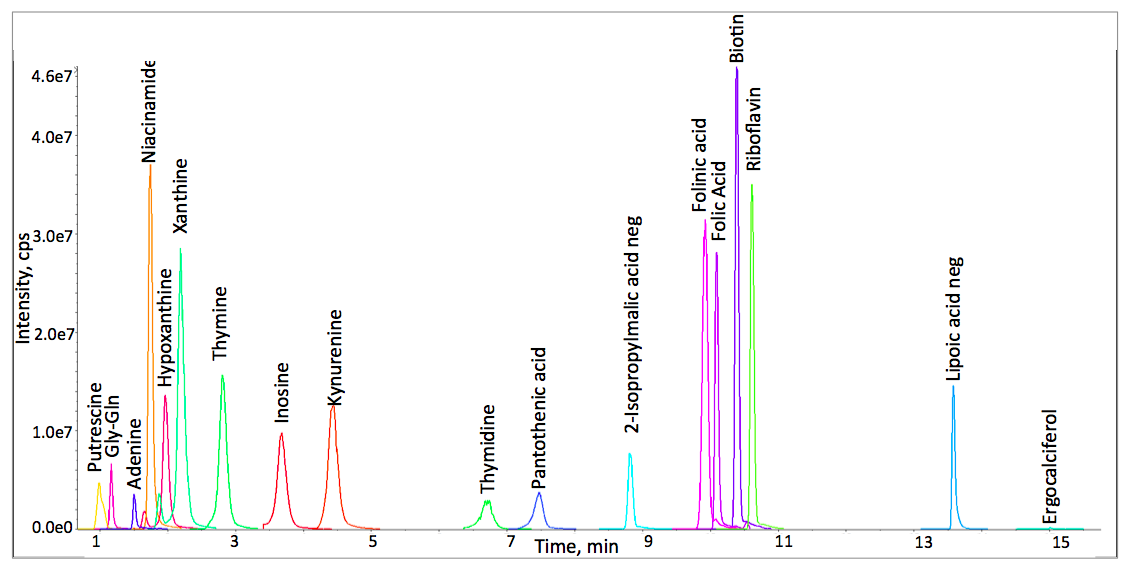
Quantitative LC-MS Solution for Targeted Analysis of Cell Culture Media
Cell culture media optimization is a critical aspect of process development. To ensure the best manufacturing productivity and final product quality, media components must be carefully evaluated. In the last decade, the biopharmaceutical industry has developed a greater understanding of individual medium components and their profound impact, not just on how much titer can be achieved, but also on the quality and efficacy of the final product. In order to better understand how each of these components affects critical quality attributes, it is important to conduct a thorough cell culture media analysis.
Cell culture media analysis is also part of a successful Quality by Design (QbD) approach. QbD is an important industry initiative, however for QbD to work effectively bioprocess conditions must be tightly controlled, this includes cell culture medium components. Even small changes in key cell culture nutrients and metabolites can have a profound impact on the quantity and, more importantly, quality of complex biotherapeutics. It is necessary to understand how these components change during production and how these changes relate to product quality when optimizing media. As a result, there is a need to develop analytical assays that can provide comprehensive and accurate cell culture media profiling for a wide range of biotherapeutic types.
To enable rapid analysis of a wide array of cell culture media components, SCIEX developed a cell culture media analysis method on the QTRAP® 6500+ LC-MS/MS System coupled to the Exion LC System. This new cell culture media method targets important nutrients including amino acids, vitamins, carbohydrates, fatty acids, nucleic acid, inorganic acids and other essential compounds found in media. Overall, 110 key cell culture media components can be analyzed in a single injection. This end-to-end solution enables a complete picture of the most critical components in cell culture conditions.
SCIEX Cell Culture Media Analysis Method Benefits:
Liquid chromatography mass spectroscopy (LCMS) was selected as it provides advantages over other traditional analytical and biosensor techniques. This includes high sensitivity, selectivity, speed and robustness. In fact, the extremely sensitive instrumentation allows quantitation levels down to as little as 25 pg/mL, (compound-dependent).
Identification and quantification of a large number of analytes in a single analysis
The MRM library identifies 110 key cell culture nutrients and contains two MRMs per compound with a few exceptions.
Superior separation of critical components provides excellent resolution of target analytes across different chemistries
One major challenge in cell culture media analysis is chromatographic separation and retention of various groups of components including isomers and polar analytes. SCIEX developed a cell culture media method that separates various classes of compounds using reversed phase chromatography on the Kinetex® F5 column. This chemistry provides separation with high resolving power for chemically different analytes based on five different interactions (hydrophobic, aromatic, electrostatic, steric/planar, and hydrogen bonding). Thus enabling efficient separation over a wide range of molecular properties.

Highly selective technology using MS/MS quantitation with little to no risk of confounding between even closely related compounds
Another challenge in traditional methods for cell culture media analysis is the separation of closely related compounds. One example is the ability to distinguish between L-cysteine and L-cystine due to similar fragmentation patterns. Monitoring the ways that cells use these components and other closely related compounds is important in the optimization of media and also in the understanding of the affects of these components on the final product. Using the SCIEX method, L-cystine and L-cysteine are well separated from each other, and also distinguished by unique MRMs. Please see the application note, “Quantitative LC-MS Solution for Targeted Analysis of Cell Culture Media,” for more details and data.
Easy to use and equipment and software
The SCIEX Cell Culture Media Analysis Method is extremely fast as there is only one injection required versus other methods that require multiple injections.
The accompanying SCIEX OS-Q Software permits easy, quick data analysis and at-line analysis of cell culture conditions with versatile qualitative and quantitative workflows available.
SCIEX OS Software also provides a simple visual way to gauge the level of nutrition available for cell growth through its integrated plot functionality (concentration metric plot). This visualization tool compares the different stages of cell culture media cultivation for successful large scale biotherapeutics production (Figure 2).

Conclusions
SCIEX’s new cell culture media analysis method has been designed to meet industry demands by providing solutions to the technical challenges present in current assay development methods. Thereby enabling a successful QbD approach for cell culture media optimization with critical quality attributes in mind. At-line monitoring strengthens QbD with the ability to monitor the impact of these components and how they change in-process. These changes can then be examined to determine the effect on critical quality attributes. In addition, the large number of nutrients that can be monitored ensures that all possible impacts are being evaluated.
For more information on the SCIEX Cell Culture Media Analysis Method, please see:
- SCIEX Cell Culture Media Analysis Method
- Application Note: Quantitative LC-MS Solution for Targeted Analysis of Cell Culture Media